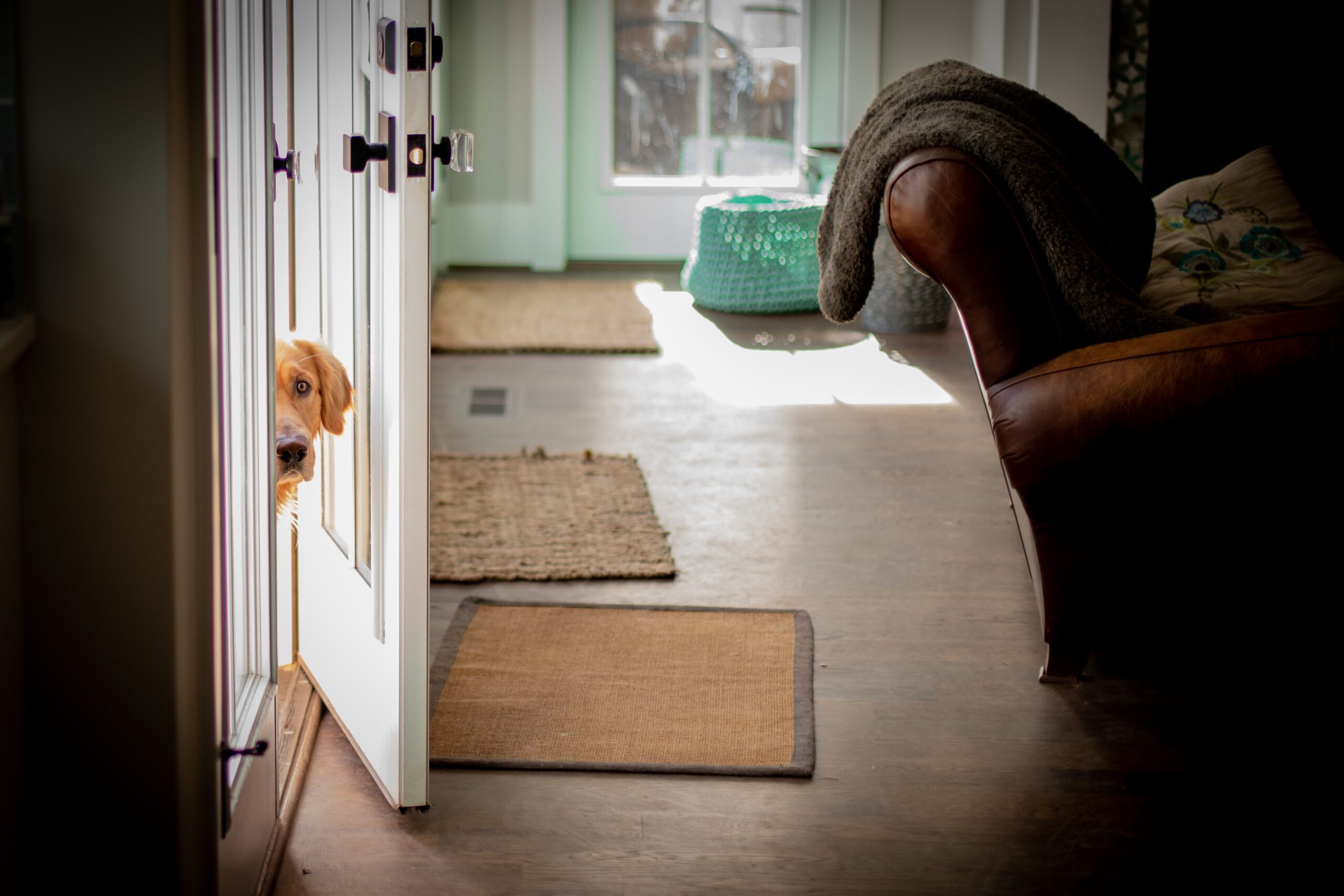Dos and don’ts of using a pet door
by Ontario SPCA and Humane Society | General Pet Care | May 24, 2024

Pet doors are a great way to give your furry friend the freedom to enter and exit the house without your assistance, provided they have access to appropriate confinement. Selecting the right pet door can be a difficult choice, with such a wide range of sizes, materials, and safety and security features to choose from. Before making your selection, it’s important to research all the available options and to share any concerns with your pet door retailer.
Here are some important dos and don’ts when considering a pet door:
DO consider comfort and size of your pet
Your pet door retailer should have a sizing chart to help you find the best fit for your animal. Measure your furry friend’s width at their widest point and their height from the floor to the top of their shoulders—add an inch or two for safety. If your companion animal doesn’t fit one of the standard pet door sizes, ask about custom doors. Also consider the elevation of your pet door. If the ground outside your pet door is too low, or if you have a short-legged or senior dog, you may need to install a pet ramp. Most retailers have sizing charts and guides to help you pick the perfect door!
DON’T assume your pet knows how to use the pet door
Most furry family members will require at least a little bit of training before using their new door. Never push or force your animal companion through their pet door. Wait until your furry friend is interested in going outside to start your training and use treats if necessary. Be patient and reward them with affection and lots of positive reinforcement.
DO discourage outside animals from using the door
Keep water and food away from the pet door so that other animals won’t be tempted to use the door. Most high-quality pet doors are designed to seal tightly, which should prevent rodents, insects and other animals from entering your home.
DON’T assume your indoor pets will stay indoors
If you live in a multiple furry friend household, you may want to consider an electronic door that allows selective entry for certain pets (e.g., if you want to let your dog outside but keep your cat inside). These specialized doors are activated by a control on the pet’s collar, or sometimes your pets microchip to not only let you customize which pets can go outside, but they also prevent outside wildlife from entering your home.
DON’T let pets wander
Pet doors should lead into a secure enclosed confinement space to keep your furry family members safe. Cats can climb fences and head off on an adventure of their own, so supervision is recommended. Likewise, pet doors should remain locked when you are not home to supervise outdoor time.
DO lock your pet door when your yard is being serviced
If you have a gardener or pool cleaner for your yard, keep your pet door locked while they’re working. Likewise, you should keep the pet door locked when you’re using any dangerous gardening equipment.
DO remember to exercise your pet
While having a pet door can give your furry family member the freedom to go outside as they please, remember that animals need mental stimulation, quality time, and regular exercise. If you have a dog, remember that a pet door doesn’t replace your dog’s regular exercise and play time.
With these simple tips in mind, you can find the perfect option for your companion and open a whole new door for them.
If this information was helpful, please help us continue to educate about pet health and well-being by making a donation.
Categories
Testimonial
Speaking for the ones who can’t speak for themselves
Keep up the good work speaking for the ones who can’t speak for themselves. A society who cares for their animals is a better society. Thanks for your good work!
